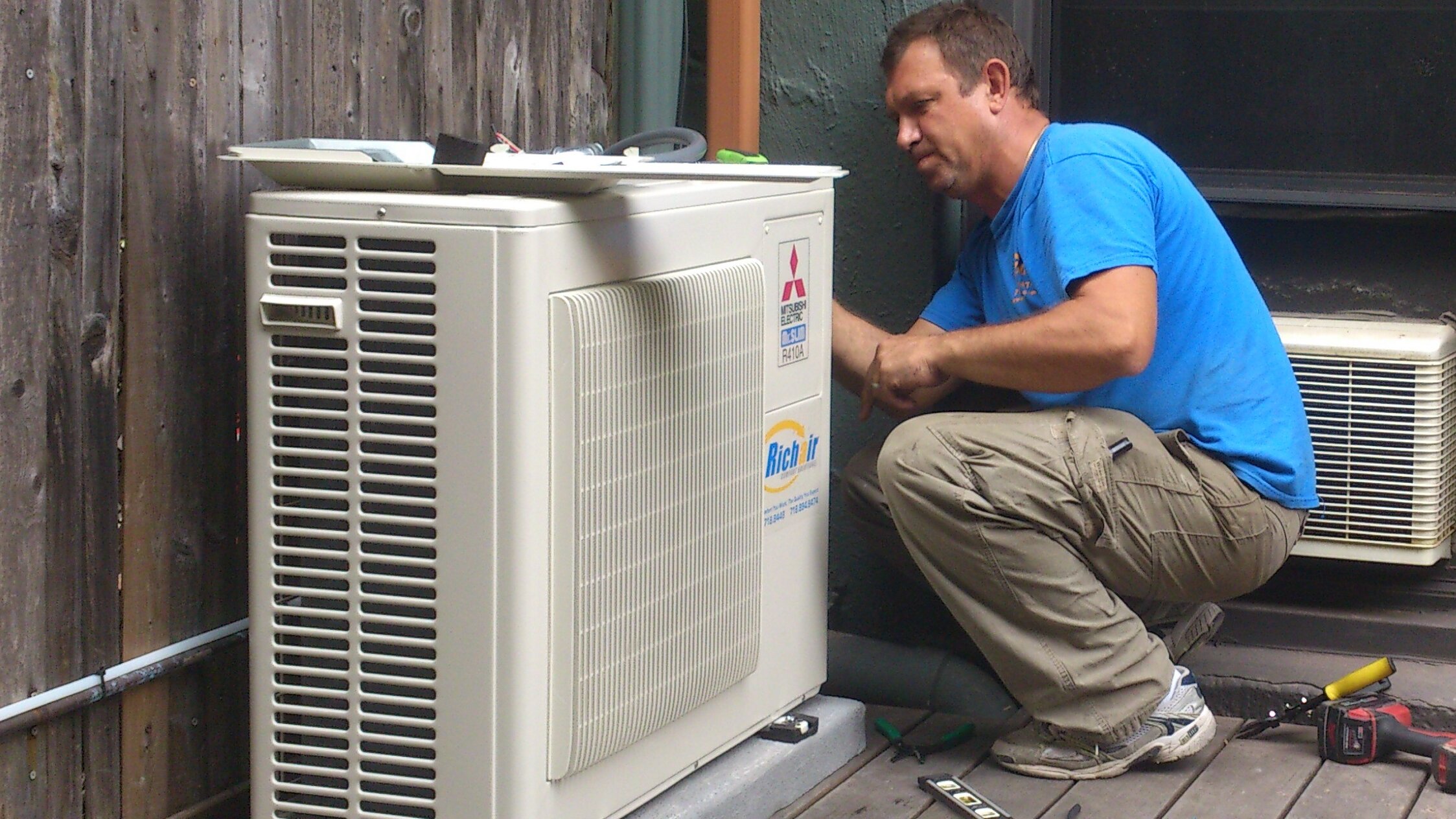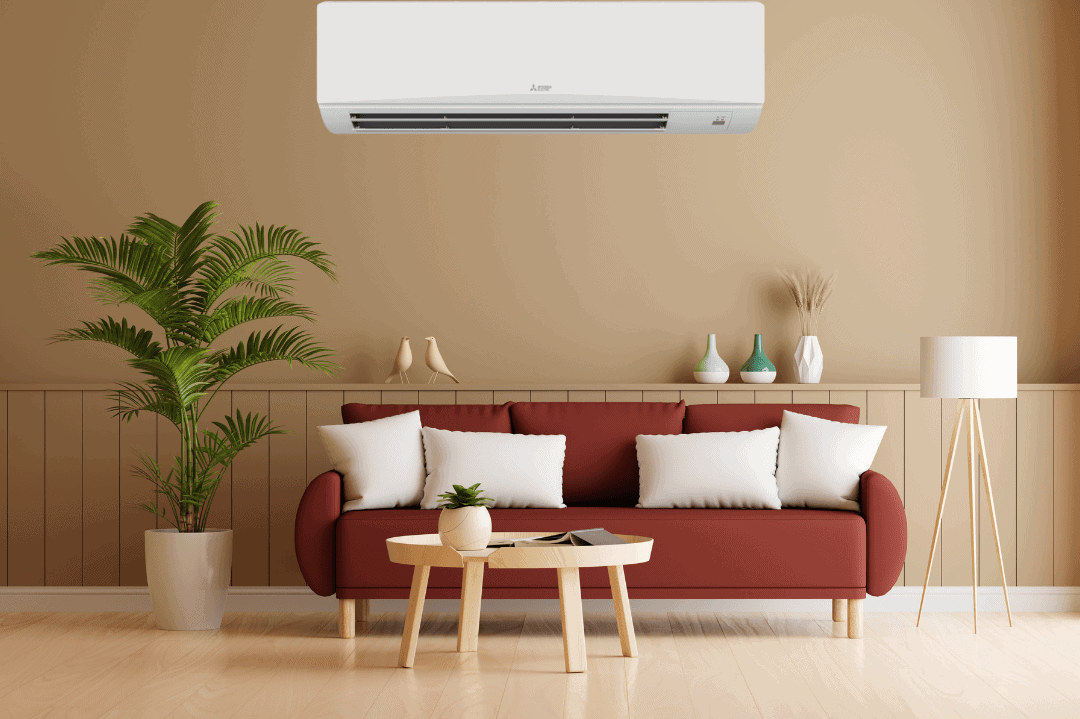Unbelievable! How Many Square Feet Does a Ductless Mini Split Cover?
Ductless mini-split systems, commonly known as "mini split AC" or "ductless air conditioners," have experienced a surge in popularity owing to their remarkable efficiency and versatility in providing year-round comfort. These systems offer an innovative alternative to traditional HVAC setups, as they operate without the need for extensive ductwork. As homeowners and businesses seek more flexible heating and cooling solutions, understanding how to select the right size for your specific space has become paramount to ensuring not only comfort but also energy efficiency.
Table of Contents:
Mini-Split System Coverage
Selecting the right mini split system for a space isn't a one-size-fits-all process. Several factors come into play to determine the most suitable unit. The British Thermal Units (BTU) rating serves as a primary indicator of the cooling or heating capacity of a unit. Essentially, a higher BTU rating corresponds to a larger coverage area.
Factors Affecting Coverage Area
Selecting the right mini split system for a space isn't a one-size-fits-all process. Several factors come into play to determine the most suitable unit. The British Thermal Units (BTU) rating serves as a primary indicator of the cooling or heating capacity of a unit. Essentially, a higher BTU rating corresponds to a larger coverage area. But that's just the beginning. Geographical location and its associated climate play a pivotal role. For instance, homes situated in colder regions or those lacking adequate insulation might demand units with a greater BTU rating to deliver optimal performance. The layout of the room or space in question also has a direct impact. Expansive open spaces, rooms with lofty ceilings, or those with partitions require careful consideration to ensure uniform temperature distribution. Moreover, architectural features like large windows or frequently used doors can influence the heat gain or loss in a space. This, in turn, affects the efficiency with which the mini split system operates.
Ensuring your mini split system is correctly sized is more than just about comfort—it's about efficiency, longevity, and cost-effectiveness. A unit that's too small for a space will incessantly labor, leading to increased energy consumption and potentially a shorter lifespan. Conversely, an oversized unit might cool a room too quickly without adequately removing humidity, leading to a damp feeling. There are a couple of prevalent methods for sizing. The Manual J Load Calculation is a comprehensive method, diving deep into various factors, from insulation quality and window types to the prevailing local climate. It's a precise way to determine the best unit for a space. On the other hand, the Rule of Thumb is a more straightforward approach, often correlating square footage with BTU. However, it's imperative to tread with caution and not fall into common pitfalls like mimicking a neighbor's setup or automatically opting for the largest unit available. Every space is unique, with its own set of challenges and requirements.
BTU Capacity vs. Square Footage
When gauging the appropriate BTU capacity for a room, general guidelines can be helpful. For instance, smaller rooms, such as individual offices or bedrooms that range between 100-300 sq ft, typically necessitate a unit with a capacity of 5,000 to 7,000 BTU. As we move to medium-sized spaces like larger bedrooms or standard living rooms, which measure between 300-600 sq ft, a unit offering 8,000 to 12,000 BTU is usually apt. For larger spaces, spanning 600-1,200 sq ft, like spacious living rooms or basements, units in the 12,000 to 18,000 BTU range are advisable. When dealing with open-concept spaces or areas with unique architectural features, it might be beneficial to either opt for a unit with a higher BTU rating or consider installing multiple units to ensure comprehensive coverage and optimal comfort.
When exploring ductless mini split systems, it's crucial to recognize that every home and space has its unique set of challenges and requirements. One such consideration is zoning. In larger homes or homes with distinct functional areas, maintaining a consistent temperature throughout can be a challenge. This is where the concept of zoning comes into play. By installing multiple indoor units, homeowners can effectively create different zones within their home, each controlled separately. This means that the living room can be kept cooler during a summer day, while the bedroom is set to a slightly warmer temperature for an afternoon nap. Multi-zone systems further this concept by connecting multiple indoor units to a singular outdoor unit. This not only streamlines the overall system but can also be more cost-effective and space-saving. The advantage? A unified system that allows for individualized comfort. For those living in regions that experience extreme climatic conditions—be it scorching summers or freezing winters—a mini split system might serve as supplemental heating or cooling. In such scenarios, the mini split system works in tandem with existing HVAC solutions, ensuring that the internal environment remains comfortable regardless of the external conditions.
The importance of professional consultation and installation can't be stressed enough, especially when dealing with intricate systems like the mini split. During a consultation, these professionals assess the specifics of your space—size, layout, insulation, and more—to recommend a system that aligns with your needs. Furthermore, installation isn't just about setting up the system. Proper placement of indoor units, ensuring optimal airflow, and making sure the system integrates seamlessly with the aesthetics of your space are all part of the package. By enlisting professionals, you're not just ensuring that the system is set up correctly, but you're also ensuring its longevity and optimal performance.

Maintenance and Efficiency with Richair Comfort Solutions
Like any mechanical system, the efficiency and longevity of a mini split system hinge on regular maintenance. Simple routines, like cleaning or replacing filters, can make a world of difference to the air quality and the system's performance. Additionally, periodic checks for refrigerant leaks or blockages can prevent potential issues down the line, ensuring that the system runs at its best. Efficiency isn't solely about maintenance; it's also about usage. Both undersized and oversized units can significantly hamper the system's efficiency, leading to increased energy consumption and reduced comfort. A handy tip for homeowners is to set the thermostat at a comfortable, consistent temperature. Constantly fiddling with settings or making dramatic changes can strain the system and reduce its efficiency.
Ensuring the optimal performance of a mini split system isn't a one-time affair but an ongoing commitment. By keeping a vigilant eye on the system, homeowners can not only prolong its lifespan but also save on energy bills in the long run. When the system operates at its peak, it reduces the wear and tear on its components, leading to fewer breakdowns and costly repairs. Furthermore, a well-maintained mini split system contributes to a healthier indoor environment by reducing allergens and pollutants that can accumulate over time. Another essential aspect to consider is the proper sizing of the system. While many might believe that bigger is always better, an oversized unit will cycle on and off frequently, causing unnecessary energy usage and uneven temperatures. On the other hand, an undersized unit will constantly struggle to maintain the desired temperature, leading to higher energy bills and excessive wear. To strike the right balance, homeowners should collaborate with professionals to assess their needs and recommend the most suitable unit. By integrating a holistic approach to maintenance and understanding the system's intricacies, homeowners can ensure they get the best out of their mini split system, both in terms of comfort and energy efficiency.
Conclusion
Ductless mini split systems are at the forefront of modern heating and cooling, combining both efficiency and adaptability to meet the needs of today's homeowners. These systems not only cater to the aesthetic demands of contemporary interior designs, eliminating bulky ductwork, but also provide unparalleled energy savings and noise reduction. The adaptability of these units allows homeowners to customize their indoor environment with precision, offering both a cost-effective and environmentally friendly solution.
However, to fully harness the advantages of a ductless mini split system, it's imperative to emphasize the importance of proper sizing, expert installation, and consistent maintenance. As homeowners seek solutions that strike the right balance between comfort, efficiency, and aesthetics, mini splits stand out as a clear choice. By ensuring that the systems are tailored to the specific needs of a space and are well-maintained, users can enjoy the optimal performance and longevity that these systems promise.
Back Home - Richair Comfort Solution - Ductless Mini Split Systems Top Quality Installations and Professional Service.
Was This Article Helpful?
RECENT POSTS






